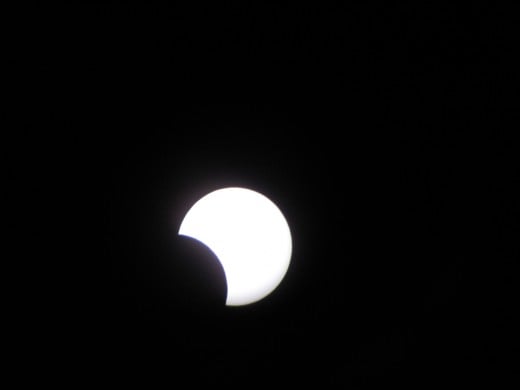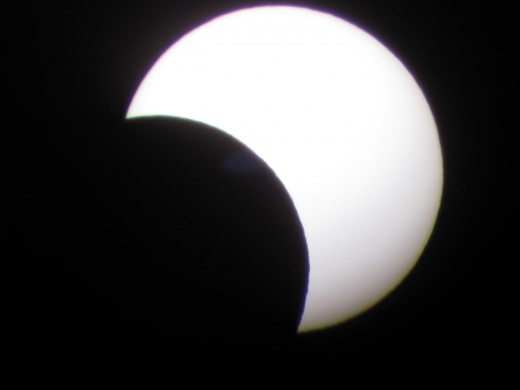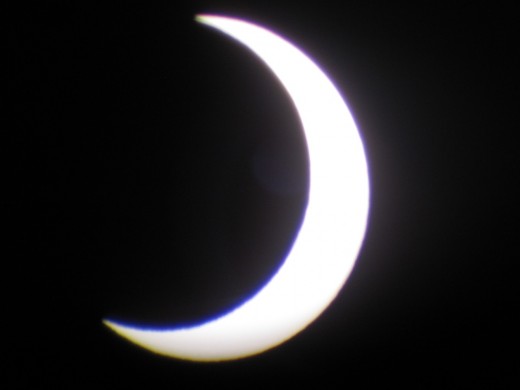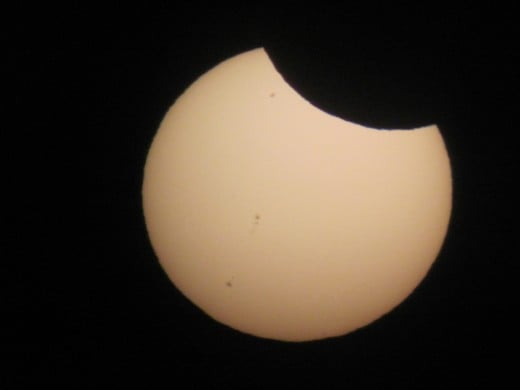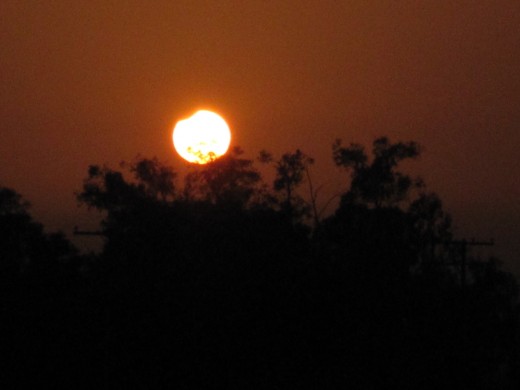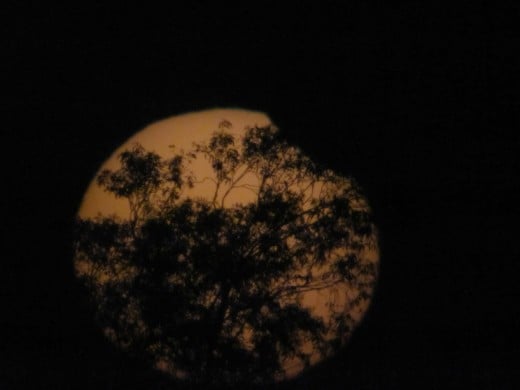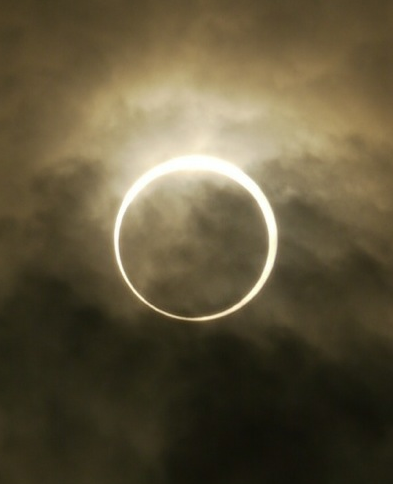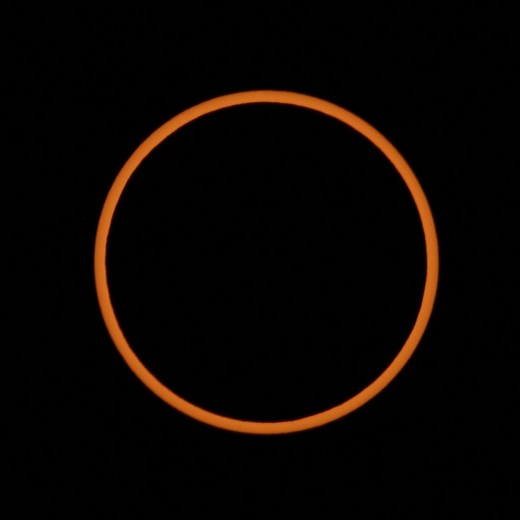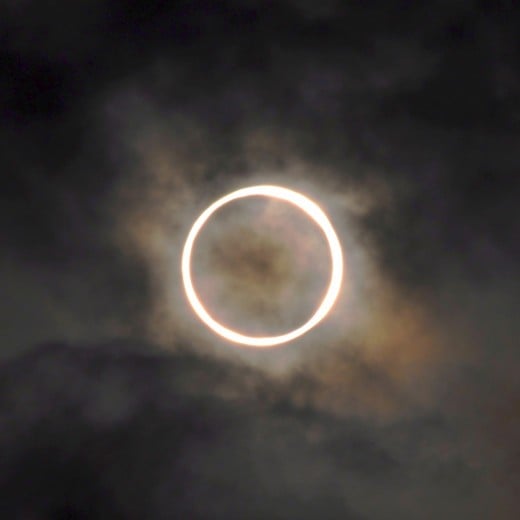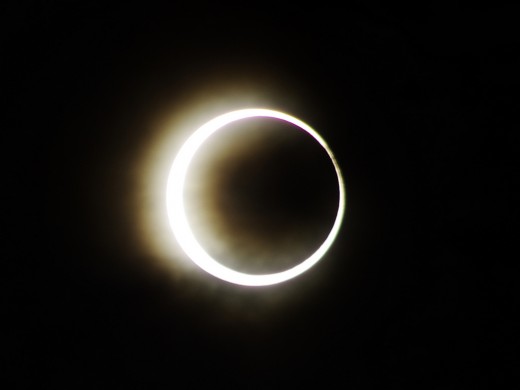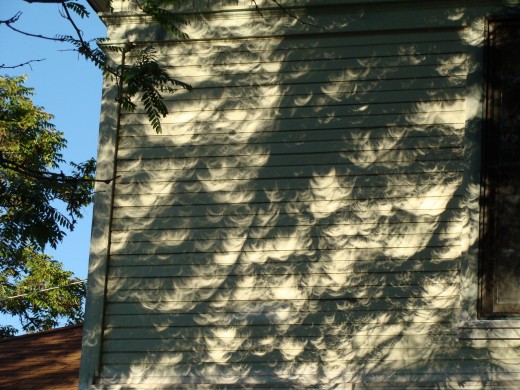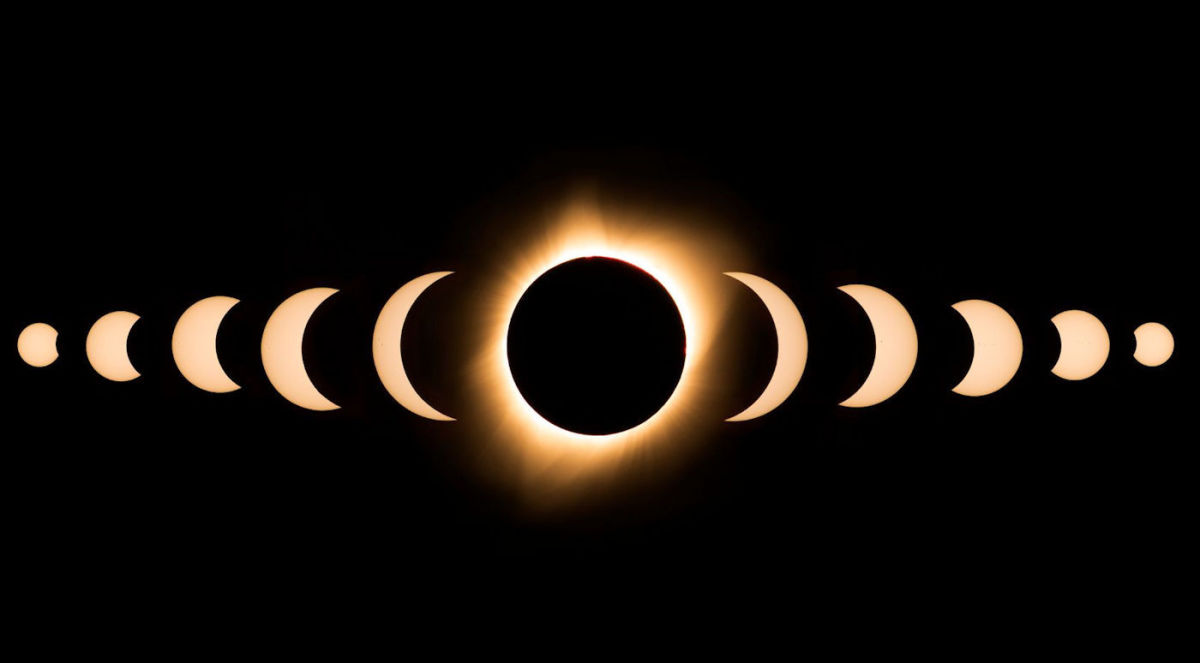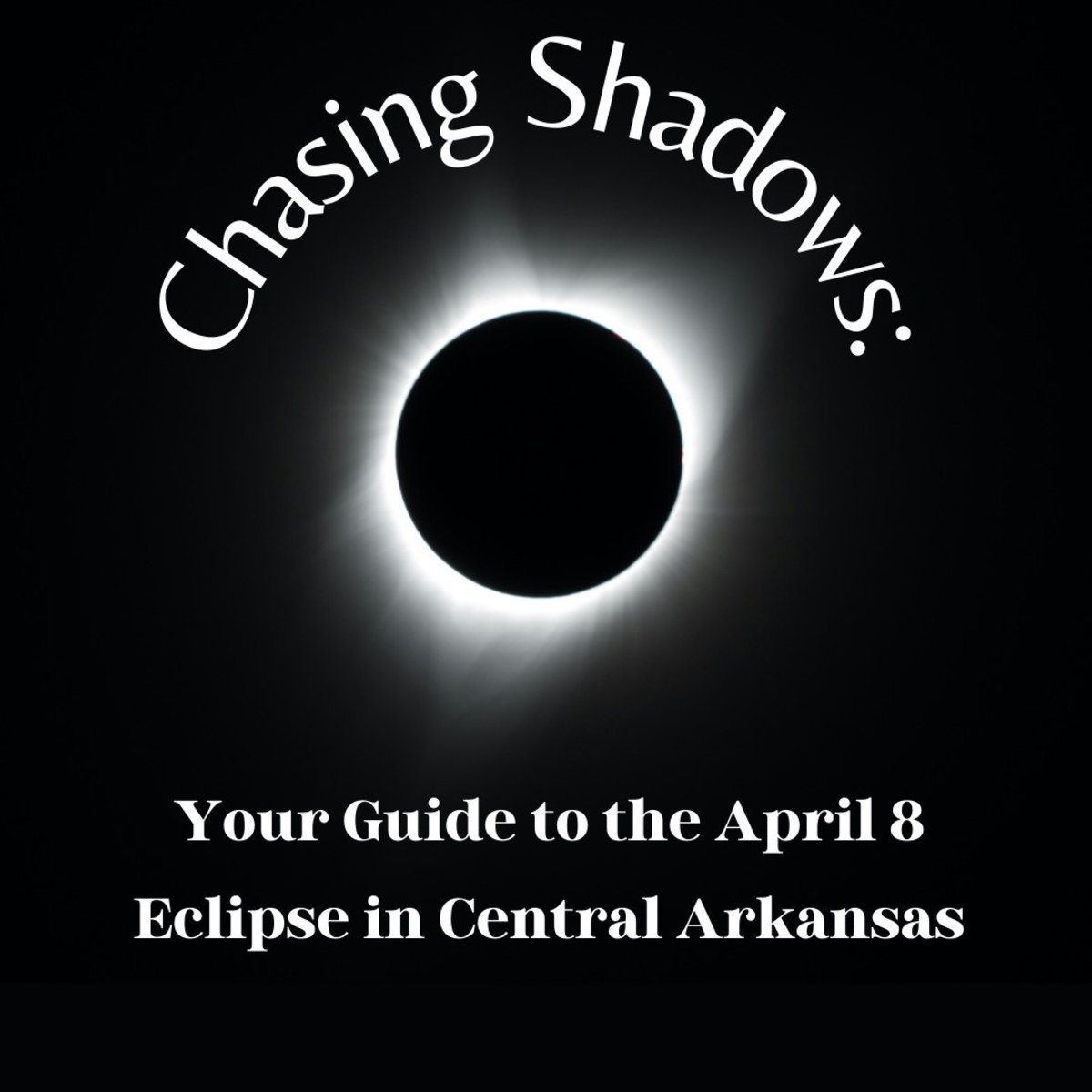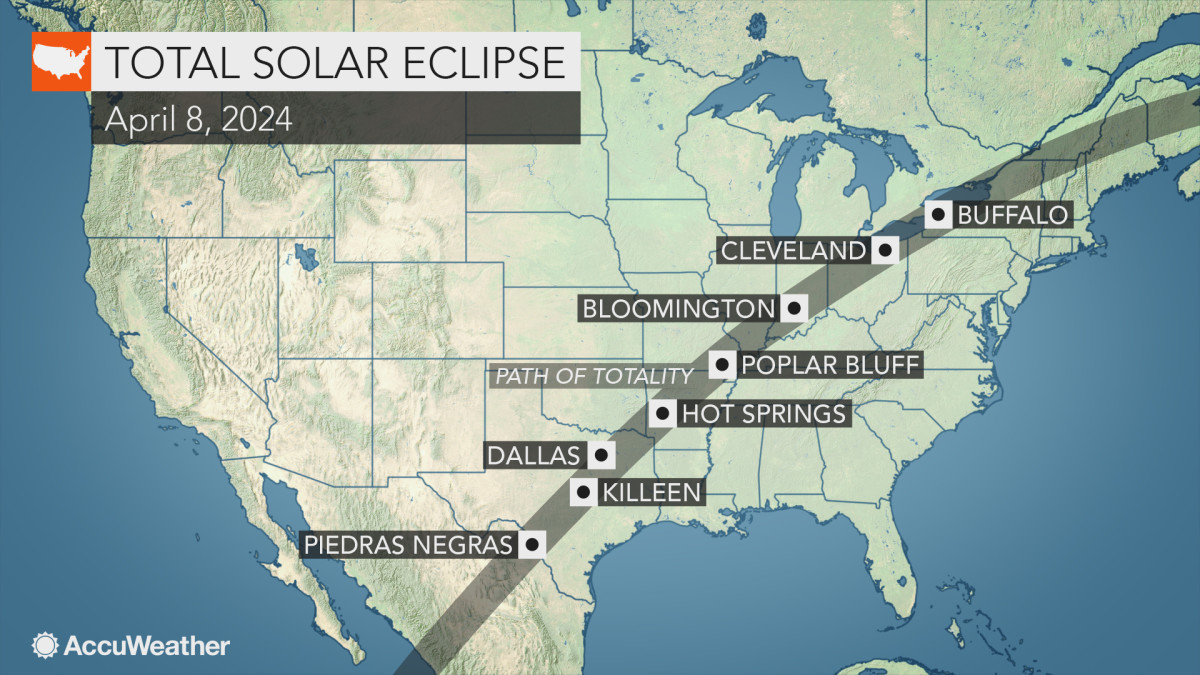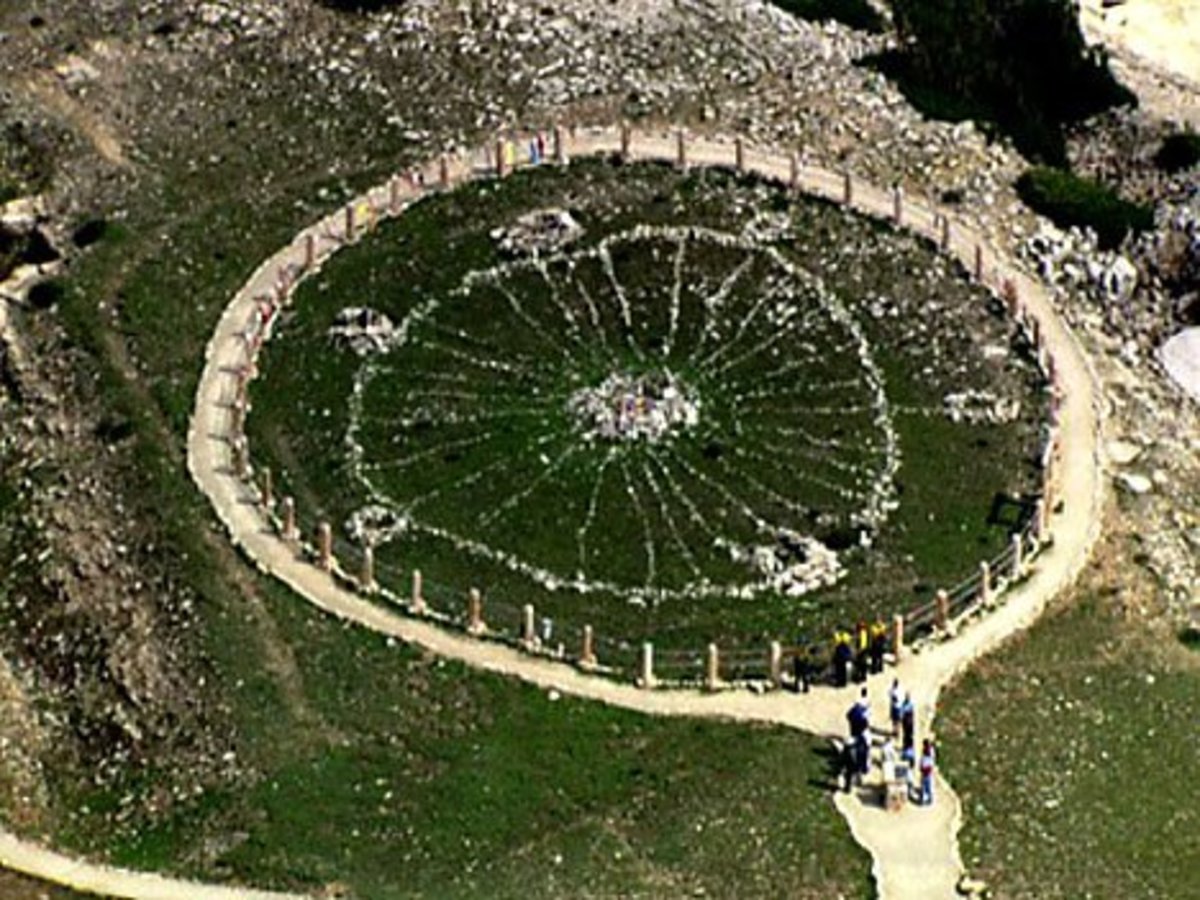My Photos of the 2012 Annular Solar Eclipse
Annular Eclipse
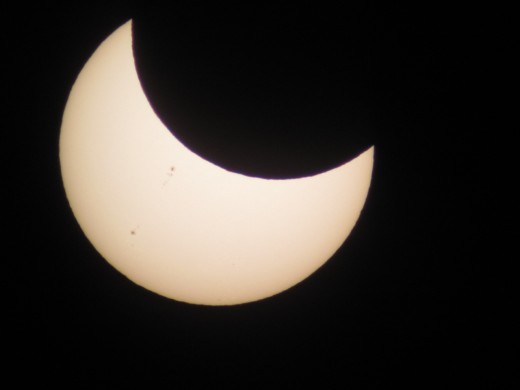
O, Say Can You See...
Want to see what the May 20th solar eclipse looked like? Here's my photos plus a few gorgeous photos and videos by far better photographers than myself.
The May 20, 2012 solar eclipse was visible over western North America for a couple hours before (and/or during) sunset. It had already crossed southern Japan, Northern Taiwan, Hong Kong and parts of China at dawn on the other side of the date line, where it was sunrise on May 21st. (See NASA's map.)
Where I live in southern California, the eclipse was only partial, covering 84% of the sun, but it was still spectacular! My parents saw the full "ring of fire" effect in Utah, but weren't able to get pictures.
After my own photos, I've featured a few Creative Commons photos and videos of the annular eclipse from other photographers that are stunning! If you have uploaded any good photos, please share a link in the guestbook.
Note: Apologies if my chart got you outside too early! I didn't realize that the Solar Eclipse Calculator App I used to look up eclipse times gives "local times" without factoring in Daylight Savings.
Video: Path of Solar Eclipse Across western U.S.
My Own Photos of May 20th, 2012 Partial Eclipse
This isn't as exciting as a full solar eclipse, but it was exciting for me.
In fact, it was more exciting than expected, because of last minute weather problems. I had planned to view the partial eclipse from the cliffs of Corona Del Mar as the sun set over the ocean. I arrived early, at 2PM, to make sure I had a good spot for the show. As the hours ticked by, the marine haze thickened into clumpy clouds by late afternoon! Finally, I bundled up my camera and telescope and filters and rushed inland to the Orange County Great Park, getting set up just in time to see the first "bite" out of the sun.
For a homemade filter, I bought a solar mylar sheet at a telescope store, cut a hole in a butter tub, taped the mylar over the hole, and used it to cap my old TeleVue Pronto backpacker telescope. Unlike modern scopes, I have to aim it by hand.
I'm not equipped for and don't have any experience with astrophotograpy. So I held a point-and-shoot digital camera over the lens and prayed.
The fourth and fifth photos show sunspots, because I was able to fine-tune the camera settings a little, and because the thicker slice of atmosphere as the sun drew near the horizon filtered out a little more glare.







So, What's an "Annular Eclipse," Anyway?
A regular eclipse happens when the moon's path causes it to pass directly between us and the sun.
So, what does "annular eclipse" mean? That's a special kind of solar eclipse in which the rim of the sun is visible around the moon in a fiery ring. This happens when the moon is at the far end of its slightly off-center orbit, and appears smaller (from earth) so that it can't cover the whole sun. Annular comes from Latin anulus, "a ring, a circle."
For most places, this was a partial eclipse, meaning that the moon doesn't pass over the center of the sun from our viewpoint, but is off-center, creating a crescent sun. Only places in the direct path of the eclipse saw the full "ring" effect.
Below are a few Creative Commons photos from Japan showing the annular eclipse.
Full Annular Eclipse Photos May 20-21st from other photographers
Click thumbnail to view full-size





2012 May 21 Annular Eclipse, Japan
How to Make a Solar Eclipse Pinhole Viewing Box
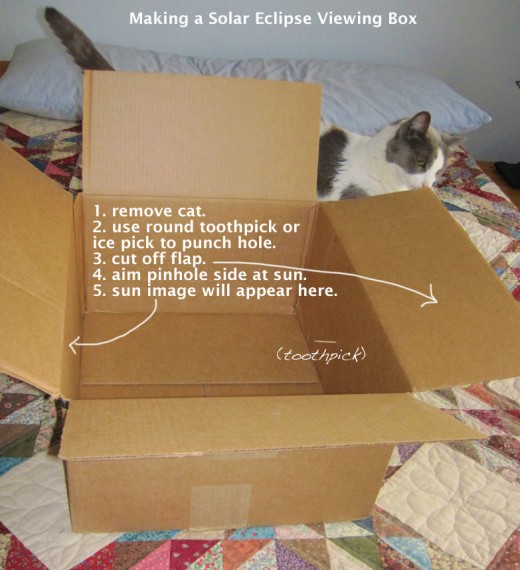
How to Safely View an Eclipse
DO NOT LOOK AT THE SUN, even when it's mostly covered -- you will damage your eyes!
Yes, even with multiple layers of sunglasses, you will still damage your eyes! It's not worth it.
If you can get to a telescope store, you may be able to buy solar eclipse filters which are safe to use for solar viewing.
Otherwise, punch a hole in a stiff card or cardboard. This will create a natural pinhole lens that will focus the image of the sun on any flat surface: the ground, or (better) another piece of cardboard. Shoeboxes or shipping boxes are ideal, since the image will appear on the side opposite the hole.
Smaller holes make a sharp, crisp image. Larger holes make a larger but less-focused image (you might want to try a hole punch on a piece of cardboard that you can raise and lower until you get the best view.) I found that a pencil-sized hole is best for getting a solar disc without it going too fuzzy.
You can even make pinhole lenses with your fingers, creating a fascinating pattern of eclipse crescents on a piece of cardboard!
Another fun trick is to have kids prepare a message by punching holes in cardboard or a stiff piece of paper. See this cute example on APOD's (Astronomy Picture of the Day) forum.
If you are near trees, be sure to look down. The tiny gaps between leaves create natural pinholes, casting a lovely pattern of tiny eclipses on the ground.
Make your pinhole viewers the day before. You don't want to be rushing to create one when it's time.
Some people have reported usinh binoculars like a pinhole shoebox to project an image of the sun onto the ground. Don't look through the binoculars at the sun; instead, point them at the sun with their eyepieces aimed at a flat surface.
Some cameras can safely look at the sun without damaging their optics, but some will be burned just like human eyes. Photograph at your own risk! Again, don't look through a camera viewfinder straight at the sun. It IS safe to look at an LCD screen, but again, the sun could damage the camera unless you cover it with a solar filter.
Natural "Pinhole Lens" Effect Showing Solar Eclipse Cast by Tree Shadows
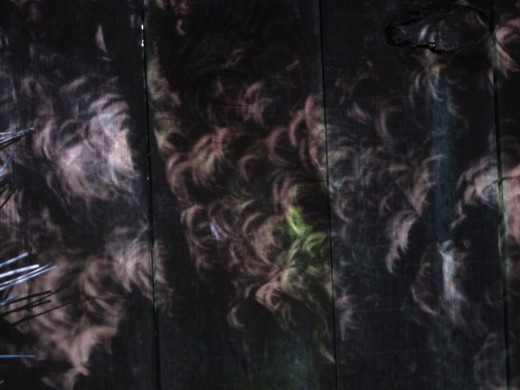
Video: "Ring of Fire" From Japan
Eclipse Poll
Are you going to watch the May 20-21 solar eclipse?
- 6% Not visible from my location
- 9% Maybe
- 82% Yes
- 3% No
This poll is now closed to voting.
Best Solar Eclipse Links
- maako tazawa's May 21, 2012 Solar Eclipse Photos
This photostream has several more stunning photos from Japan, including glimpses of solar prominences (eruptions). - SLOOH SpaceCamera - Watch the Solar Eclipse Live Online!
When something's up, SLOOH space camera livestreams it online! Watch the solar eclipse on this website live, even if you're nowhere in the path of the eclipse. - Solar Eclipse on May 20: Complete Coverage | Space.com
Space.com is my favorite site for space news. Times, infographics explaining solar eclipses, and a tutorial on how to make a shoebox pinhole viewer are part of the pre-eclipse coverage; there will be great photos here when it's over. - NASA's webpage on May 20th Solar Eclipse
Includes a somewhat technical description.
Next U.S. Solar Eclipse: August 21, 2017
Amazingly, a 2-minute TOTAL solar eclipse will cut across the United States diagonally from Oregon to South Carolina on August 21, 2017. Start making plans now!
- Overview animated map showing path of 2017 solar eclipse
- Google Map of 2017 Eclipse: Zoom in to find exactly where path of total eclipse will be.

